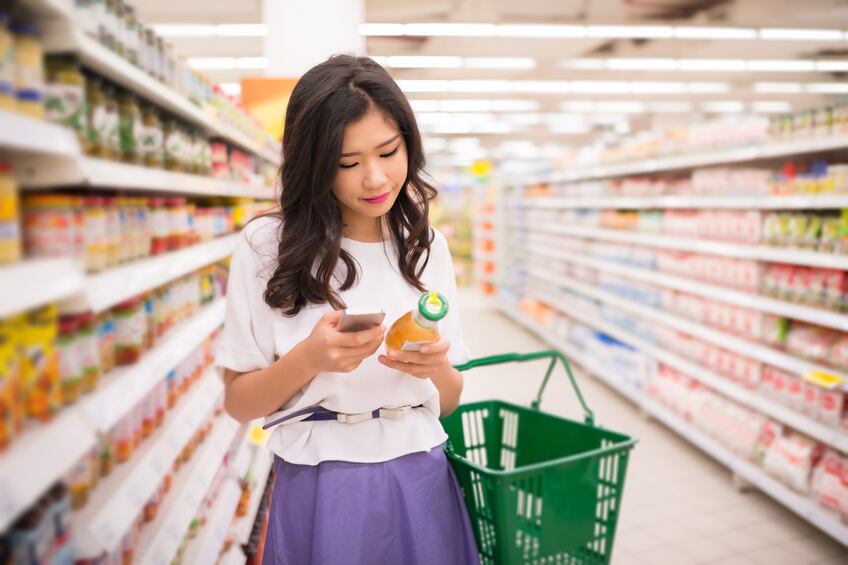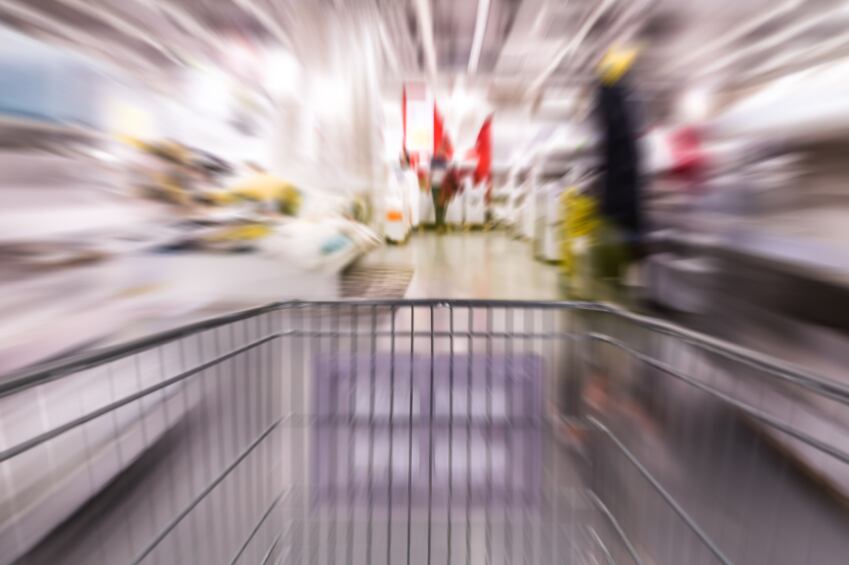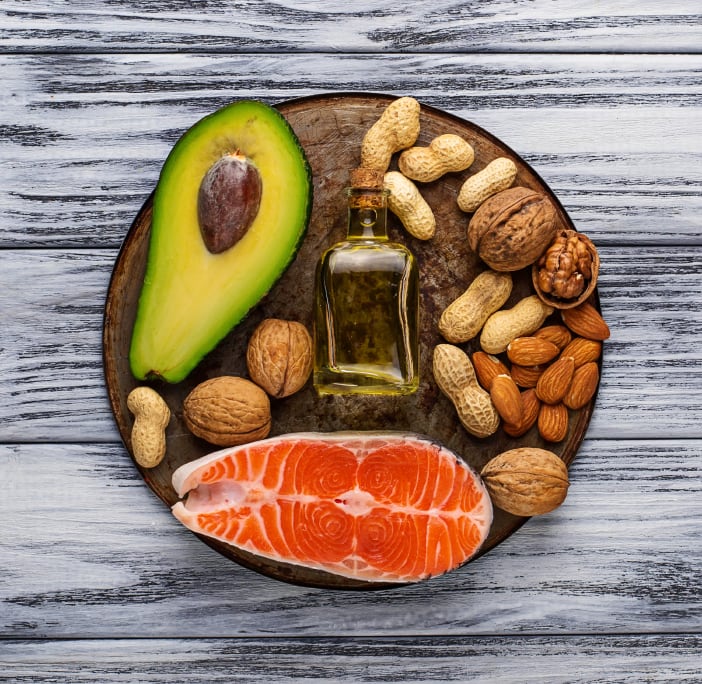Disruptive change has come to the supermarket sector. Technological innovations online and in-store, as well as shifting consumer expectations, are changing the way food retailers operate. The pace of change has been brisk and shows no sign of abating in 2019.
“2019’s biggest trend of all is likely to be the continuation of rapid and radical change in the food and grocery industry,” Toby Pickard, head of insight, innovation and futures at insight group IGD, predicted.
“We have already seen a significant pivot towards innovative new technology, and there is no sign of this letting up next year. Shoppers’ expectations have changed, and the retail and grocery sectors are working to meet those expectations in every area of business.”
Here are six top trend forecasts for the supermarket space in 2019.
#1 – Tech transforming e-commerce
E-commerce has been a disruptive force in grocery retailing, taking market share from traditional bricks-and-mortar retailers.
According to recent research from IGD, the ten leading global online grocery markets are expected to generate combined sales of almost €200 billion, at an annual growth rate of 20%, by 2023. Four of these markets are in Europe: the UK, France, Germany and Spain.
“We’re anticipating continued online growth opportunities across mature Western European markets. In the UK, France, Germany and Spain we forecast above market average growth rates for online grocery retailing, all growing market share,” Jon Wright, head of retail insight EMEA at IGD, forecast.
Market share growth will be supported by advances in technology improving the shopper experience and fulfilment capabilities. “It provides a significant growth opportunity as retailers and manufacturers in the region invest in personalisation, ease and convenience and combining online and offline to meet a range of shopper needs,” Wright suggested.
Zina Mavroeidi, the CEO behind one of Europe’s fastest growing AI-powered digital grocers e-Fresh, stressed that technological developments are needed to answer the challenges faced by e-commerce players.
“Online grocery combines the complexity of e-commerce with the requirements of fresh food – it is, therefore, a challenging space. It is becoming apparent that an investment in the logistics operations is much needed in order to support the scale of a growing business and lower cost to serve for online orders,” she told FoodNavigator.
These new technologies include warehouse automation and AI, which were pioneered by the likes of pure-play online grocer Ocado in the UK and are now gaining traction with other players.
According to Mavroeidi, such advances will be critical to the development of new e-commerce models. “Warehouse automation and AI allow us to envision those type of new e-commerce models and they are more relevant than ever in the online world, exactly because of the nature of the business. New technologies are therefore disrupting the online space by allowing for new propositions and sustainable business models.”
#2 – Physical stores go digital

Technological advances are also set to change how people shop for groceries in-store.
Throughout the coming year, experts expect physical stores will increasingly offer more digital experiences, with consumer-facing technology employed to make it easier for shoppers to find, research and buy food. For example, searching the aisle to find particular products could be a thing of the past with the development of apps that guide shoppers through their in-store experience.
“Traditional supermarkets fight back against the online disruptors – and information about shoppers’ preferences and habits will be an important weapon. Consumer-facing technologies, such as shopping-cart-mounted devices or smartphone apps, will steer shoppers towards the aisles and shelves where they are more likely to make purchases. Sensors in the store’s shelves will keep track of the items customers put in their carts and bill their mobile payment system as they exit the store,” Bjorn Thumas, director of business development at equipment supplier Tomara, suggested.
IGD's Pickard believes new in-store tech will enable bricks-and-mortar retailers to leverage their “more tangible” shopping experience to their advantage.
“This gives these spaces an advantage over online providers, and we are seeing stores begin to capitalise on that and add in extras to incorporate more of the benefits of online,” he noted. “A recent example of this is Il Viaggiator Goloso, a premium Italian brand, which has enabled its electronic shelf-edge labels to show the online reviews and scores products have received. This gives customers a more informed choice in store.”
#3 – Personalised experiences
Shopper data also will be used to guide people through the shopping experience creating personalised experiences both on- and off-line. This will be important to develop "meaningful" consumer engagement, Olly Abotorabi IRI's regional insights manager, told FoodNavigator.
This, he suggested, has the potential to transform loyalty programmes through personalisation.
"Loyalty programmes remain an important component of the customer experience, but they are increasingly commoditised, with customer usage driven by habitual collection of points rather than meaningful engagement with the retailer and its brand. This lack of purpose and differentiation is a challenge for retailers who need to derive value from their programmes to justify continued investment, especially with disruptive online retailers and specialist ‘clubs’ able to develop one-to-one relationships with the customer without the need for a traditional points-based programme.
"Using predictive analytics to create forward-looking and highly personalised programs based on individual customer preferences and behaviours is the long-standing goal, but doing this at speed and scale, is still a challenge. Understanding the what, when, where and how customers buy and then making a quick, impactful decision to drive growth, that can also be accurately measured is still beyond the reach of many retailers. Those companies who get this right, embed a customer insight-driven approach across the entire business, will be the ones that lead the pack."
Through customer data sets, AI and machine learning in-store, retailers will ultimately be able to target products and offers more effectively. This will drive purchase and ensure suppliers’ budgets for promotions like couponing and sampling are deployed to maximum effect.
Insight generated by increased customer engagement will inform retailer strategies, from ranging and procurement to produce placement and promotion.
#4 – The rise of 'social commerce'

The evolution of e-commerce could result in new ways of shopping. IGD predicted that so-called ‘social commerce’ models are likely to emerge in 2019. Through social commerce, retailers and suppliers will deliver targeted marketing, as well as new ways to make online shopping more social, instantaneous, and convenient.
“In 2019 we’ll see retailers think increasingly about making every moment shoppable. A recent innovation was easyJet making it possible for Instagram users to find and book holidays to new destinations, simply by clicking on a photo they have seen. Whether through targeted marketing or simple ways to make purchasing more seamless, shopping is becoming not just more convenient but more instant as well,” Pickard predicted.
New tech will mean people will no longer need to visit a retailer’s online store. As they look at pictures and videos online they will be able to add products to a virtual shopping cart instantaneously. This has the potential to radically reinvent the way products are bought and sold.
#5 – Supply chain tech

These developments will place traditional supply chains under pressure. An answer is likely to come in the form of internet-of-things technology, machinery manufacturer Tomra’s business development director Thumas believes.
“Processing lines will need to know in precise detail what is coming-in from the field and what is in storage in order to meet demand. And quality and safety standards will have to be higher than ever. In the past consumers might have ignored a defect or made a complaint only seen by the grocery chain or food manufacturer, but social media will change that. A photo of something like a frog in a bag of lettuce can quickly go viral and global, reaching enough people to cause brand damage.”
The demand for freshness – and the pressure to cut food waste – will mean supermarkets have to improve efficiency of stock deliveries, Thumas continued. This will be enabled through live data feeds, he suggested
Such developments could significantly reduce supermarkets’ floor space and storage requirements – paving the way for the development of new retailing models.
“Supermarkets and specialised grocery stores will have the option of reducing on-site running costs by becoming smaller, while dedicating a larger proportion of their shelves to displaying fresh produce,” Thumas said.
“Another likelihood is that supermarkets will remain the same size but change in concept, becoming destinations for click and mortar shopping. Because retailers need to offer consumers a consistent omnichannel experience, stores will connect the physical and digital worlds. Here, consumers can see and feel products they might order online. Here, too, the online product offering could also be accessible via interactive screens.”
#6 – Traceability and data

Data is also transforming consumer expectations around traceability. 2018 saw a number of retailers, including Carrefour and Auchan, adopt block chain technology to provide consumers with access to detailed information on the origin of food products via QR codes. We can expect these programmes to continue apace in 2019.
Announcing its block chain pilot earlier this year, Carrefour chairman and CEO Alexandre Bompard spoke about the company’s responsibility for its private labels. This, he said, means having “perfect traceability”.
“We are now testing out an application of this technology on our bird-raising sustainability. We can trace the entire journey of a chicken from the hatchery [to] its inclusion in our stores, going through breeding, feeding, care and indeed slaughtering.
“By 2018, the Blockchain system should be present in all Carrefour subsidiaries; they should lead by example in terms of traceability.”
Improved access to product data will stretch beyond the origin of foodstuffs and extend to areas such as nutrition and taste, Thumas predicted.
“The growing number of people around the world with middle-class incomes and lifestyles will become more aware of food safety and more curious about how their foods are being sourced and screened. Discerning ‘foodies’ will even be able to check information about the origins and nutritional value of produce, and to see suggestions for recipes and food pairings. This will attract and addict greater numbers of customers while cleverly making each one feel as if they are being treated individually.”



